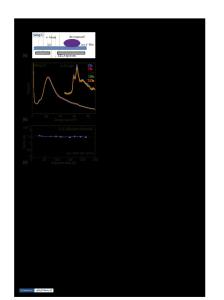An environmental transmission electron microscope for in situ synthesis and characterization of nanomaterials
- PDF / 2,910,348 Bytes
- 13 Pages / 612 x 792 pts (letter) Page_size
- 93 Downloads / 391 Views
The world of nanomaterials has become the real world for most applications in the area of nanotechnology. As postsynthesis handling of materials at the nanoscale level is impractical, nanomaterials must be synthesized directly as part of a device or circuit. The demands of nanotechnology have led to modifications in the design of transmission electron microscopes (TEMs) that enable in situ synthesis and characterization simultaneously. The environmental TEM (ETEM) is one such modified instrument that has often been used to follow gas–solid and/or liquid–solid interactions at elevated temperatures. Although the history and development of the ETEM, also called the controlled atmosphere or environmental cell TEM, is as old as transmission electron microscopy itself, developments in the design of medium-voltage TEMs have succeeded in bringing resolutions down to the subnanometer level. A modern ETEM equipped with a field-emission gun, energy filter or electron energy-loss spectrometer, scanning transmission electron microscopy coils, and bright-field and dark-field detectors can be a versatile tool for understanding chemical processes at the nanometer level. This article reviews the design and operations of a dedicated ETEM. Its applications range from the in situ characterization of reaction steps, such as oxidation-reduction and hydroxylation, to the in situ synthesis of nanomaterials, such as quantum dots and carbon nanotubes. Some examples of the current and the future applications for the synthesis and characterization of nanomaterials are also discussed.
I. INTRODUCTION
The transmission electron microscope (TEM) is the preferred tool for the characterization of nanomaterials due to their extremely small size (1–10 nm). Atomiclevel structural information can be routinely obtained using medium-voltage (i.e., 200–400 kV) TEMs with point-to-point resolution of 0.17–2.4 nm. A TEM equipped with a field-emission gun (FEG) as the electron source not only extends the information limit but also has the additional advantage of providing atomic-level chemical information due to its capability to form a small probe (∼0.2 nm). Most modern FEG-TEM instruments are equipped with an electron energy-loss spectrometer (EELS) or an imaging filter. For nanomaterials characterization, TEM/scanning TEM (STEM) with high-angle annular-dark-field (HAADF) detector is often used to obtain atomic-level chemical information by spectral imaging or Z-contrast imaging from nanosized particles combined with electron energy-loss spectroscopy. a)
Address all correspondence to this author. e-mail: [email protected] DOI: 10.1557/JMR.2005.0241 J. Mater. Res., Vol. 20, No. 7, Jul 2005
The manipulation of nanomaterials after synthesis is very difficult, if not impossible, due to their size. Therefore, when the postsynthesis selection of a material suitable for a desired application is not practical, the synthesis must be performed directly as part of the device fabrication. For such selective synthesis, it is important to relate the reaction proces
Data Loading...











